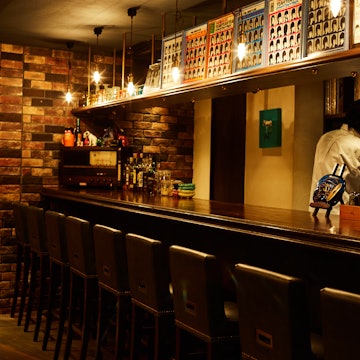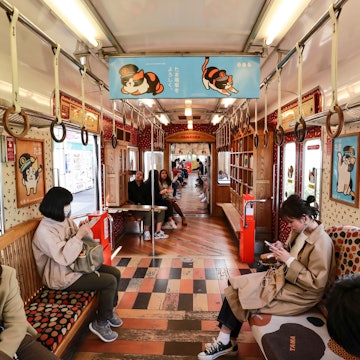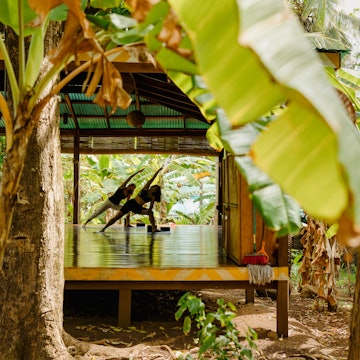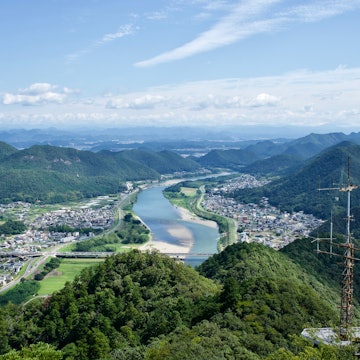

The Edo-style Kiyomizu-dera temple in the Higashiyama neighborhood overlooks modern Kyoto. Jonathan Gregson/Lonely Planet
Within Kyoto's historically rich and compact confines, distinctive neighborhoods tell different tales about this storied city. The liquor-fueled alleys of Ponto-chō gossip about the darkened exploits at its nightlife haunts. Ancient religious iconography chants among the rolling Higashiyama hills. And Edo-period flagstones ring with the footsteps of the kimono-clad dancers of Gion.
Venturing through Kyoto is like embarking on a journey through the history of Japan. Here are the top neighborhoods in Kyoto to include on your tour.

1. Gion
Best for Edo-period culture and traditional arts
Gion's reputation as an entertainment hub stretches back to the Sengoku Warring States era (1467–1615). Over the subsequent centuries, it evolved into a rambunctious neighborhood of teahouses where geisha (known locally as geiko, or "women of the arts") performed for the ruling classes.
Trademarks of the Edo period (1603–1868), when geiko culture was in its prime with some 500 traditional teahouses in operation in Gion, are stitched into the very fabric of the neighborhood. Wood-latticed shop fronts and sudare (bamboo veranda screens) flank the roadsides. Kimono-clad geiko and maiko (geiko in training) clip-clop along the ancient, lantern-lit walkways. Centuries-old shrines still exude a magnetic appeal for travelers and wandering pilgrims alike.
Part of the charm of Gion is simply walking around its atmospheric streets – though visitors should note that thrusting your camera toward the resident geiko unsolicited is a fineable offense.
Make sure to stop at the 7th-century Yasaka Shrine, a gleaming vermilion edifice dedicated to Susanoo, the younger brother of sun goddess Amaterasu. A visit to the riverside Minamiza Theater is a wonderful introduction to traditional kabuki. If you want to take the cultural immersion one step further, you can rent period-style garments at Studio Shiki, which has a variety of options for adults and children.
Gion is also one of the best neighborhoods in Kyoto for lodging. Its location on the banks of the Kamo River puts it within walking distance of central Kyoto, the Higashiyama hills and Ponto-chō across the river. Gion has several chic short-term rentals down quiet side streets, some of which take bookings from larger groups.

2. Higashiyama
Best for strolling
Higashiyama, which means "eastern mountains," sits in the foothills east of Kyoto's city center. The mountaintop temple Kiyomizu-dera, meaning "pure water," is one of the most famous landmarks in city rich in temples and shrines. One of 17 UNESCO World Heritage Sites in Kyoto, Kiyomizu-dera is a striking example of Edo-period religious architecture and the site of wish-granting spring waters from the nearby Otowa Waterfall.
From the main worship hall's veranda, you'll get some of the best views of the Kyoto cityscape and its undulating mountain backdrop – the vista is particularly stunning when the autumn leaves are in color in October. The Sannen-zaka and Ninen-zaka alleyways leading up to the temple precinct are lined with shops selling traditional foodstuffs, like soba (buckwheat noodles); zenzai, a hot and sweet soup of adzuki beans, sugar and mochi (pounded rice made into festive cakes); and yatsuhashi, a favorite Kyoto snack made with rice flour, sugar and cinnamon.
Stroll to the Path of Philosophy and follow the poetic walking route in between the 13th-century Nanzen-ji temple and the well-kept gardens of Ginkaku-ji, the Silver Pavilion. The approximately 2km (1.25-mile) walk alongside a gently coursing canal is best enjoyed during cherry blossom season in the spring, when thousands of pink petals drift across your path – a phenomenon that symbolizes the ephemerality of life itself.
Sanjūsangen-dō, a Buddhist temple of the Tendai sect featuring 1001 statues of the Bodhisattva Kannon, also sits in the Higashiyama district. It's recommended for travelers who want some reprieve from the busiest crowds of the city, as the no-photos rule helps preserve an atmosphere of calm within its hallowed halls.
When you are deciding where to stay in Higashiyama, consider Hotel Material, an art hotel with a rooftop deck and beer garden. Given this is a walkers' neighborhood, most of the accommodations in Higashiyama will enable you to explore the area without relying on the (albeit excellent) public transportation system.
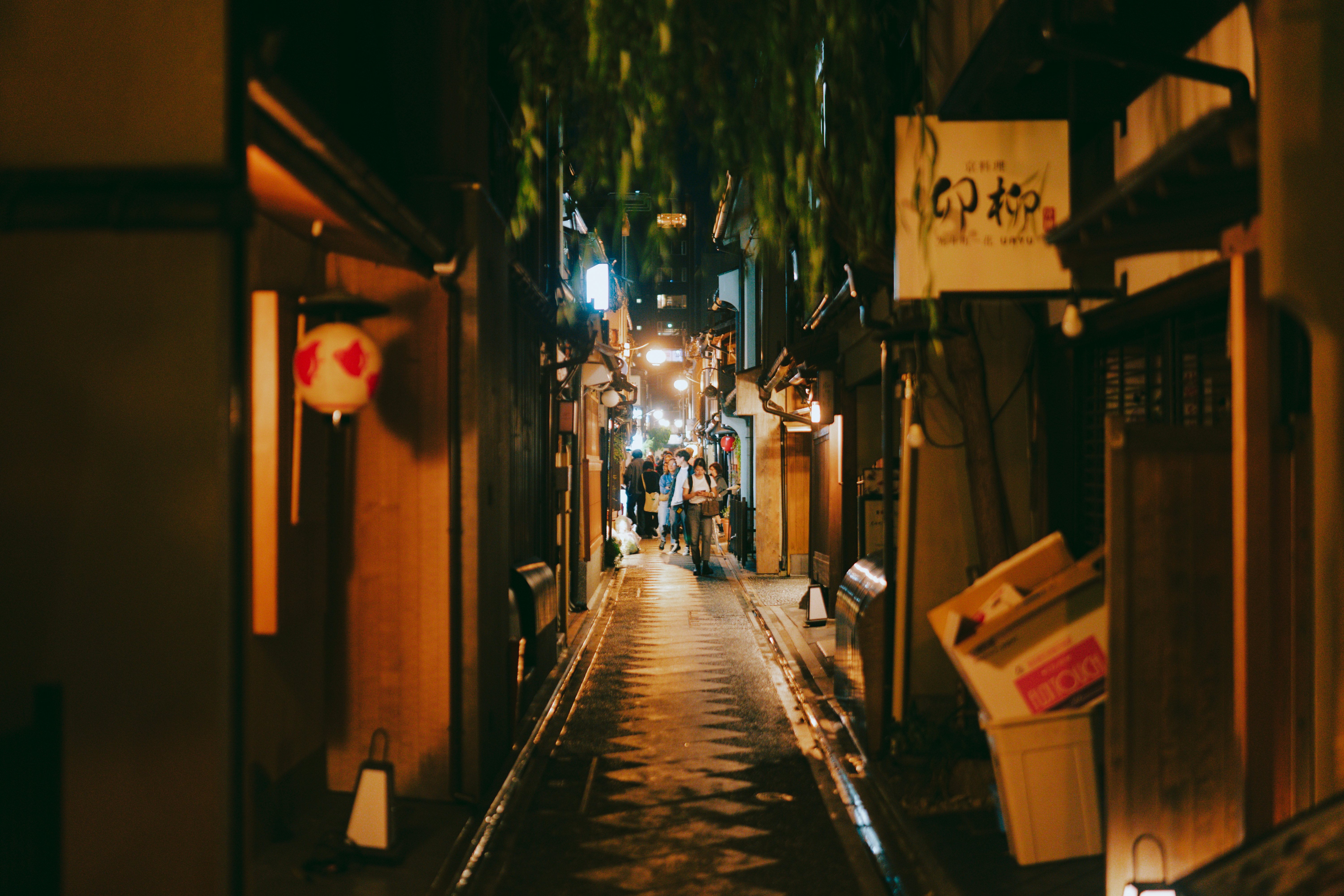
3. Ponto-chō
Best for drinking and dining
Running along the banks of the Kamo River is Ponto-chō, a lively yokochō (alleyway) between the major downtown shopping thoroughfares of Shijō-dōri and Sanjō-dōri. Ponto-chō comes to life after dark, when the quarter is suffused with the glow of paper lanterns and the raucous chatter of imbibers in its many drinking and dining establishments.
From May through November, riverfront restaurants erect temporary outdoor terraces called kawayuka that overlook the river and adjacent promenade. Everything from bang-for-your-buck yakitori (grilled meat or vegetable skewers) to extravagant kaiseki (multicourse seasonal cuisine) is on offer in Ponto-chō; wagyū beef is a top seller. Kyo-no-Yakiniku-Dokoro Hiro Ponto-chō is a great spot to sample DIY barbecue in a quintessentially Japanese setting.
Ponto-chō was once one of Kyoto's geiko centers, and though today the performers are largely consigned to the other side of the river in Gion, the theme of late-night entertainment remains as strong as ever.
For classic cocktails and live jazz on weekends, head to the antique confines of Hello Dolly. The smooth Jazz in Rokudenashi (meaning "without ice") has a fantastic selection of whiskeys, both Japanese and international. Bar Alchemist has equally suave decor, leaning toward modern cocktail mixology (with English-speaking bar staff often in attendance).
Staying near Ponto-chō is handy, as it will allow you to wander from one of its late-night haunts straight to bed. You'll also be within walking distance of Gion and some of the must-see sites in Higashiyama. Cross Hotel Kyoto is a nice midrange hotel, located a few minutes from the alleyway on foot, with Japanese- and Western-style rooms available.

4. Fushimi
Best for Shinto history
In Kyoto's Fushimi neighborhood, you'll find its namesake shrine, Fushimi Inari-Taisha, renowned for the thousands of bright vermilion torii (gates) that funnel pilgrims through a forest of cedar and into the hills beyond. The most sacred of Japan's 30,000-plus Inari shrines – which are dedicated to the Shinto god of rice, foxes and prosperity – Fushimi Inari-Taisha has existed since the Nara period (710–794 CE).
Adventurous travelers eager to try one of the area hikes can set a course to Mt Inari's 233m (765ft) summit, a path that traverses 5km (3.1 miles) of uphill terrain and usually takes between two and three hours, starting from Fushimi-Inari Station. Summitters will be rewarded with city views and a visit to the humble Kami-no-Yashiro shrine. The Fushimi shrine complex is one of the busiest photography spots in Kyoto, so weekday mornings are the best time to visit.
Around 5km (3 miles) or 50 minutes on foot from Fushimi Inari, you'll find another one of Kyoto's most treasured monuments. Fushimi-momoyama Castle (whose singsong name means "Hidden Waters, Peach Mountain") was built in the late 16th century as a retirement residence for Japan's Great Unifier, Toyotomi Hideyoshi; he died here in 1598.
Though it was demolished in 1623, a replica was built in 1964, and visitors are free to explore the grounds. Its location in a quiet suburb of the city makes it a great escape from the crowds, especially during hanami (blossom viewing) season.

5. Nakagyō
Best for foodies
The Nakagyō ward in the heart of Kyoto is home to Nijō Castle, the former residence of the Tokugawa Shogun, the lineage of militaristic dictators who ruled Japan during the Edo period.
It is one of the best remaining examples of traditional castle architecture, thanks to its perimeter moat, Chinese-influenced Karamon Gate, preserved walls separating the Honmaru (main circle of defense) and Ninomaru (secondary circle of defense), and nightingale floors that squeaked to notify residents of potential intruders. Go on a self-guided tour of the structures and pristine landscape garden using an English audio guide (rentable at the front kiosk).
Beyond Nijō Castle, Nishiki Market is a culinary arcade known affectionately as Kyoto's kitchen. You'll find everything here, from fresh sushi and tsukemono (Japanese pickles) to wagyū beef burgers and chef's knives.
Once your appetite is piqued, seek out one of the city's 100 Michelin-starred restaurants, many of which are located in Nakagyō. Head to Tempura Mizuki for best-in-class battered shrimp and vegetables, Kentan Horibe for kaiseki cuisine or Vena for Italian-Japanese fusion. Booking ahead (through a hotel concierge if possible) is highly recommended.
Nakagyō's modern urban aesthetic means it's full of accommodation options, from middle-of-the-range chains to boutique hotels like Mogana and Matsui Honkan. While Nakagyō isn't Kyoto's prettiest neighborhood, its central location makes it well connected to the rest of the city via bus routes.










